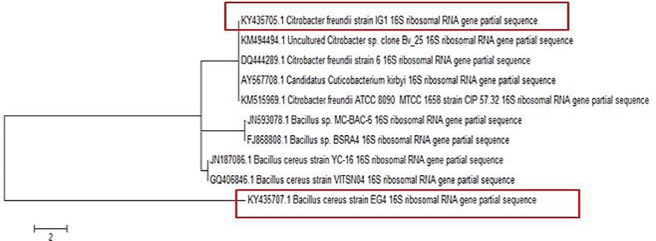Bacillus cereus and Citrobacter freundii from Lumbricus terrestris Facilitate Vermicomposting and Improve Soil Characteristics
Bacillus cereus and Citrobacter freundii from Lumbricus terrestris Facilitate Vermicomposting and Improve Soil Characteristics
Syeda Shazia Bokhari*, Ghashia Qayyum, Uzma Rafi and Aisha Waheed Qurashi
Phylogenetic analysis of bacterial strains IG1 and EG4 with submitted sequences in genebank.
Effect of pH and temperature on bacterial growth.
Bacterial autoaggregation response in bacterial isolates.
Bacterial coaggregation assay between strains IG1 and EG4.
Bacterial hydrophobicity Assay using xylene as an organic solvent.
Water holding capacity determination in vermicompost soil recorded at the start and end of experiment.
Change in pH during the course of time in vermicompost soil.
A, Soil aggregates percentages developed in vermicompost soil; B, (a) image of soil aggregates observed in Stereo microscopic at 40 X magnification, (b) The soil aggregates had high moisture retention, (c) Water styable aggregates formed in inoculated soil combination of set B.
Staining of soil aggregates using Indian ink. The arrows showed stained regions of aggregate.



















